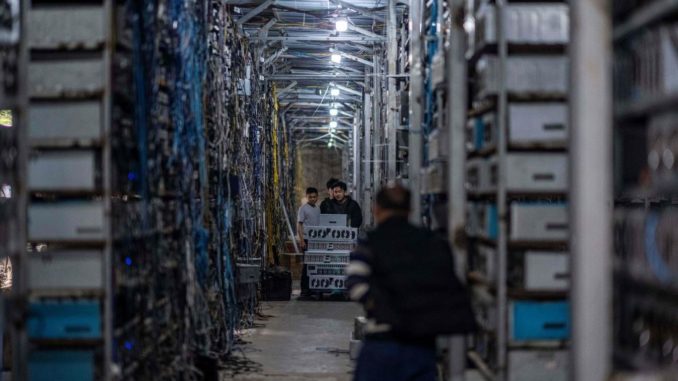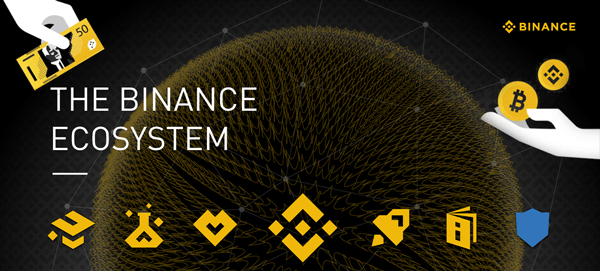
Intel is stepping into blockchain after saying the Bonanza Mine, a particular kind of chip designed to assist Bitcoin miners generate new tokens. The chipmaker says its gadget will probably be extra highly effective and energy-efficient than anything in the marketplace, with CEO Pat Gelsinger claiming this might assist the “local weather disaster” brought on by Bitcoin mining’s excessive power utilization. Nonetheless, specialists have questioned whether or not extra environment friendly silicon could have a big affect on Bitcoin’s general carbon footprint.
Bonanza Mine is an application-specific built-in circuit (ASIC) for Bitcoin miners, introduced as a part of a wider blockchain roadmap which Intel launched final week. ASICs are chips designed to hold out a specific job, and Intel claims it provides 1000x higher efficiency per watt of power in comparison with mining with a GPU. How its efficiency compares with different ASICs in the marketplace stays to be seen.
“We’re conscious that some blockchains require an unlimited quantity of computing energy, which sadly interprets to an immense quantity of power,” mentioned Raja Koduri, senior vice chairman and common supervisor for accelerated computing methods at Intel. “Our clients are asking for scalable and sustainable options, which is why we’re focusing our efforts on realising the complete potential of blockchain by growing essentially the most energy-efficient computing applied sciences at scale.”
Gelsinger reiterated the corporate’s place in an interview with Bloomberg yesterday, stating: “A single ledger in Bitcoin consumes sufficient power to energy your home for nearly a day – that’s a local weather disaster. If we produce the tech that consumes that a lot power, wow, that’s not okay.”
Why is Intel stepping into Bitcoin?
Bitcoin mining is a course of which checks and verifies transactions on the digital forex system. Miners are rewarded for his or her work with new Bitcoin. This course of is advanced and notoriously energy-intensive, and will be carried out utilizing general-purpose GPUs, resembling these manufactured by Nvidia and different corporations, or ASICs.
“ASIC gadgets are by far the most typical method to mine Bitcoin commercially,” says Dr Richard Jenkins, product growth supervisor at Nexalus, developer of a novel cooling system for chips together with ASICs. “A GPU or CPU in a PC can mine Bitcoin, however these are not viable when it comes to price, effectivity, and efficiency. Subsequently, ASIC miners are the selection of any enterprise mining Bitcoin commercially at the moment.”
Greater than 20 corporations already develop Bitcoin ASICs, with Chinese language firm Bitmain and US-based Whatsminer producing the main methods in the marketplace. However Intel is the primary of the main gamers within the system to take an curiosity.
Present merchandise have a “excessive failure charge”, says Jenkins, so a dependable ASIC from Intel may very well be successful with miners. “The Bitcoin mining house has by no means had such a well-established model resembling Intel making ASICs,” he says. “Intel manufactures dependable, high-quality, well-designed and environment friendly merchandise within the high-performance computing house, so if their ASIC follows the previous efficiency of their different merchandise it’s doable for them to take a big market share.”
Grabbing a big market share might be what Intel is banking on, says Mike Orme, who covers the semiconductor marketplace for GlobalData. “The crypto-mining enterprise isn’t going to shrink,” Orme says. “If the Intel ASIC significantly reduces the facility draw concerned in mining it is going to be on to a winner.”
Orme believes Intel may undercut rivals resembling Bitmain, which will get its ASICs produced by Taiwanese chipmaker TSMC, as a result of it might probably do manufacturing by itself well-established, in-house course of nodes. “It doesn’t must get these ASICs, that are sometimes 14nm jobs, made by a foundry,” he says. “It could possibly knock them out itself.”
Intel has already introduced a number of clients have signed as much as its roadmap, together with main blockchain miners GRIID and Argo Blockchain, in addition to Block, the digital funds firm run by Twitter founder Jack Dorsey. “Dorsey at Block, amongst others, appears to purchase [Intel’s] energy-saving, cost-saving story,” Orme provides.
Bonanza Mine ASIC: can it lower Bitcoin’s carbon footprint?
Whereas the Bonanza Mine ASIC is prone to provide higher worth than anything in the marketplace, whether or not it is going to affect the warmth emissions is much less sure.
Dr Jenkins says that earlier improvements on this space haven’t led to important modifications within the quantity of warmth generated by Bitcoin mining. “These form of efficiencies alone are solely a short-term resolution and gained’t remedy the power or CO2 points related to the Bitcoin community,” he says. “Historical past has proven that even with a 1000x enchancment in effectivity from CPUs to ASICs, the facility demand of the community has solely continued to develop, with no functionality of thermal power restoration.”
Bitcoin is presently on observe to devour 147.67 TWh of electrical energy this yr, in accordance with the Cambridge Bitcoin Electrical energy Consumption Index, produced by the College of Cambridge’s Centre for Different Finance (CCAF). This implies its energy consumption is bigger than many nations round. Argentina, for instance, consumed 121twH in 2021. Final yr the CCAF mentioned Bitcoin would have been within the prime 30 nations on this planet by electrical energy consumption.
Alex de Vries is a researcher and founding father of Digiconomist, a web-based platform which tracks the unintended penalties of rising applied sciences. He has printed a number of papers on the carbon footprint of Bitcoin, and is sceptical that Intel’s intervention out there will probably be helpful from an environmental perspective. “With Bitcoin, the one factor that issues to miners is how a lot cash they make,” he says. “They’ll spend a sure proportion of that cash on power. So for those who give them a machine that’s twice as environment friendly, that simply means they’ve cash left over to purchase extra machines.”
This marks Bitcoin mining out as completely different to different markets by which Intel operates, De Vries says. “Should you take a look at an space like knowledge centres, they’ve been fairly steady [in electricity consumption] over the previous few years as a result of actual fact that chips are enhancing and you will get extra computational energy for a similar quantity of power,” he says. “So that you don’t essentially must spend extra power. Bitcoin is completely different: there’s an incentive to make use of extra power for those who can as a result of you can be rewarded, and I feel that’s a misunderstanding [from Intel] of how mining works.”
Certainly, removed from making Bitcoin mining greener, De Vries believes including a brand new ASIC into the combination may add to e-waste. “ASICs are extremely specialised tools,” he says. “They’re solely good for one job, and as soon as they’re not producing a revenue it’s pointless to even flip them on.”
A analysis paper by De Vries and Christian Stoll, titled ‘Bitcoin’s rising e-waste downside‘, highlights that the business generates greater than 30 metric kilotons of e-waste every year, with the typical life cycle of an ASIC being lower than 18 months. “The know-how strikes quick on this space,” he says. “So if Intel places a brand new piece of kit on the market that’s extra highly effective than anything, everybody will wish to have it as a result of the primary folks to get it is going to make extra income. This occurs with each technology.”
Briefly, De Vries believes Intel’s intervention out there is unlikely to result in greener Bitcoin. “The principle impact of Intel arising with a brand new ASIC will probably be extra digital waste,” he says. “Electrical energy consumption is prone to stay broadly the identical.”
Learn extra:

Information editor
Matthew Gooding is information editor for Tech Monitor.
rnrnSource link “,”author”:{“@type”:”Person”,”name”:”admin”,”url”:”https://cryptonewsbtc.org/author/admin/”,”sameAs”:[“https://cryptonewsbtc.org”]},”articleSection”:[“Bitcoin”],”image”:{“@type”:”ImageObject”,”url”:”https://cryptonewsbtc.org/wp-content/uploads/2022/02/GettyImages-1234052151.jpg”,”width”:1024,”height”:683},”publisher”:{“@type”:”Organization”,”name”:””,”url”:”https://cryptonewsbtc.org”,”logo”:{“@type”:”ImageObject”,”url”:””},”sameAs”:[“https://www.facebook.com/jegtheme/”,”https://twitter.com/jegtheme”,”https://plus.google.com/+Jegtheme”,”https://www.linkedin.com/”]}}
Source link





 Bitcoin
Bitcoin  Ethereum
Ethereum  Tether
Tether  XRP
XRP  USDC
USDC  TRON
TRON  Lido Staked Ether
Lido Staked Ether  Dogecoin
Dogecoin  Cardano
Cardano
Be the first to comment